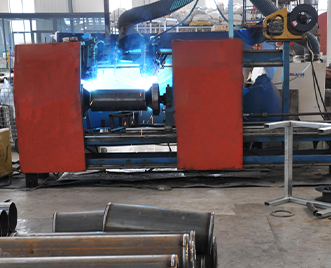Aug . 03, 2024 03:01 Back to list
Explore the Best Options for Purchasing Submersible Water Pumps for Your Needs Today
The Benefits of Buying Submersible Water Pumps
Submersible water pumps are an essential tool for various applications, ranging from residential uses like draining basements to industrial applications in construction sites or agricultural settings. This article delves into the reasons one might consider buying a submersible water pump, highlighting its advantages, types, and key features to look for.
What is a Submersible Water Pump?
A submersible water pump is designed to be fully immersed in water. It is typically encased in a waterproof housing and is driven by electricity. Unlike centrifugal pumps that draw water, submersible pumps push water to the surface, making them effective for draining or transferring water from lower levels to higher elevations.
Advantages of Submersible Water Pumps
1. Efficiency Submersible pumps operate more efficiently than traditional pumps since they are submerged in the fluid being pumped. This eliminates the need for priming and reduces the risk of cavitation, leading to better performance even in deep water applications.
2. Versatility These pumps can be used in a variety of scenarios, from residential tasks such as removing flooded water from basements to agricultural irrigation and pond maintenance. Their adaptability makes them a valuable investment for both homeowners and professionals.
3. Space Saving Unlike external pumps that require additional spaces and may need complex installation, submersible pumps can be easily dropped into a well, pit, or tank, taking up minimal space and requiring little installation effort.
4. Durability Designed to operate underwater, these pumps are built with materials resistant to corrosion and wear. This durability extends their lifespan, making them cost-effective in the long run.
5. Noise Reduction Since submersible pumps are submerged in water, they operate quietly compared to above-ground pumps, helping to maintain a peaceful environment in residential areas.
Types of Submersible Water Pumps
buy submersible water pump

When considering purchasing a submersible pump, it is essential to understand the different types available
- Sump Pumps These are commonly used in basements to prevent flooding by pumping out excess water. - Drainage Pumps They are designed for removing water from construction sites, flooded areas, or similar environments. - Well Pumps These are specialized pumps for extracting water from wells, efficiently delivering it for household or agricultural use.
- Effluent Pumps Used for handling wastewater, these pumps transfer lightly contaminated water, often in septic systems.
Key Features to Look For
When buying a submersible water pump, consider the following features
- Head and Flow Rate The pump's head refers to how high it can push water, while the flow rate indicates how much water it can move in a given time. Assess your needs to find a pump that meets these specifications.
- Power Source Most submersible pumps are electric, but some may be powered by gasoline or diesel, especially for outdoor or industrial applications. Choose one that aligns with your available power sources.
- Construction Material Look for materials resistant to rust and wear, such as stainless steel or thermoplastics, to enhance durability.
- Cord Length Ensure the pump has a long enough power cord to reach your nearest electrical outlet without requiring extension cords.
In conclusion, buying a submersible water pump is a wise decision for anyone in need of an efficient, versatile, and durable water-moving solution. With various types available for different applications and several features to consider, it is important to assess your specific needs to choose the pump that best suits your requirements. By making an informed choice, you can enjoy the benefits of reliable water management for years to come.
-
Submersible Water Pump: The Efficient 'Power Pioneer' of the Underwater World
NewsJul.01,2025
-
Submersible Pond Pump: The Hidden Guardian of Water Landscape Ecology
NewsJul.01,2025
-
Stainless Well Pump: A Reliable and Durable Pumping Main Force
NewsJul.01,2025
-
Stainless Steel Submersible Pump: An Efficient and Versatile Tool for Underwater Operations
NewsJul.01,2025
-
Deep Well Submersible Pump: An Efficient 'Sucker' of Groundwater Sources
NewsJul.01,2025
-
Deep Water Well Pump: An Efficient 'Sucker' of Groundwater Sources
NewsJul.01,2025
-
 Submersible Water Pump: The Efficient 'Power Pioneer' of the Underwater WorldIn the field of hydraulic equipment, the Submersible Water Pump has become the core equipment for underwater operations and water resource transportation due to its unique design and excellent performance.Detail
Submersible Water Pump: The Efficient 'Power Pioneer' of the Underwater WorldIn the field of hydraulic equipment, the Submersible Water Pump has become the core equipment for underwater operations and water resource transportation due to its unique design and excellent performance.Detail -
 Submersible Pond Pump: The Hidden Guardian of Water Landscape EcologyIn courtyard landscapes, ecological ponds, and even small-scale water conservancy projects, there is a silent yet indispensable equipment - the Submersible Pond Pump.Detail
Submersible Pond Pump: The Hidden Guardian of Water Landscape EcologyIn courtyard landscapes, ecological ponds, and even small-scale water conservancy projects, there is a silent yet indispensable equipment - the Submersible Pond Pump.Detail -
 Stainless Well Pump: A Reliable and Durable Pumping Main ForceIn the field of water resource transportation, Stainless Well Pump has become the core equipment for various pumping scenarios with its excellent performance and reliable quality.Detail
Stainless Well Pump: A Reliable and Durable Pumping Main ForceIn the field of water resource transportation, Stainless Well Pump has become the core equipment for various pumping scenarios with its excellent performance and reliable quality.Detail
